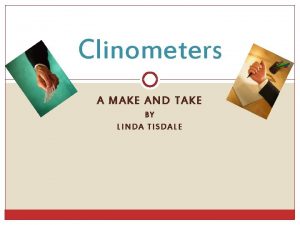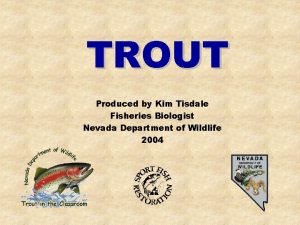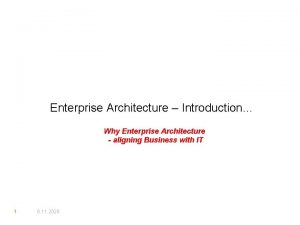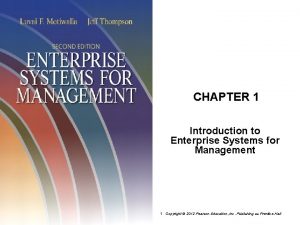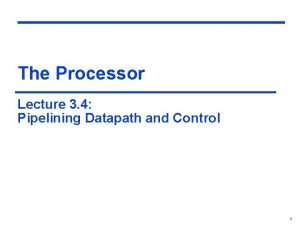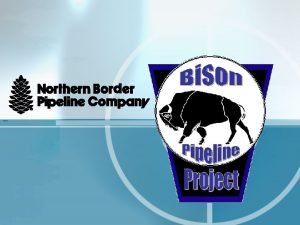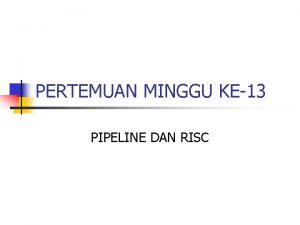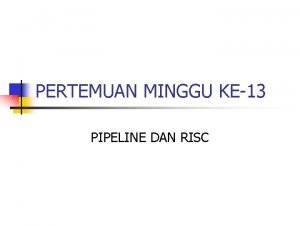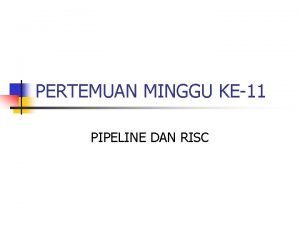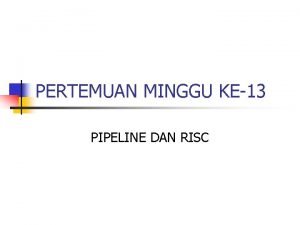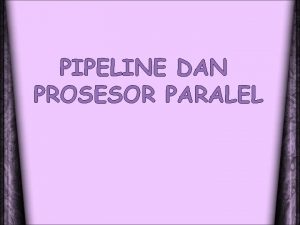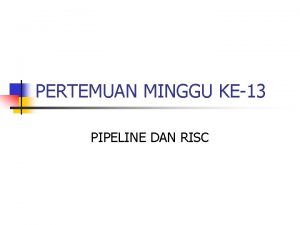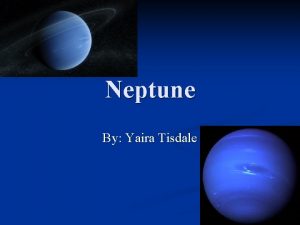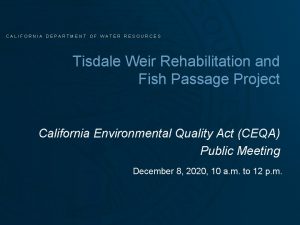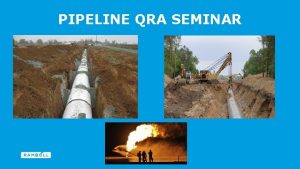Introduction to Pipeline ML John Tisdale Enterprise Products



















- Slides: 19


Introduction to Pipeline. ML John Tisdale Enterprise Products Terry Strahan MPH

What is Pipeline. ML is an initiative to develop an open extensible vendor-neutral international standard to enable the interoperable interchange of pipeline data between parties, disparate systems and software applications without loss of accuracy, density or data resolution; without ambiguity; and without need for conversion between intermediate or proprietary formats while maintaining contextual integrity. This standard is expected to leverage existing OGC standards such as GML, GML-SF, WFS, WMS, etc.

What is Pipeline. ML seeks to facilitate exchange of pipeline data between such parties as: § Pipeline Operator Internal Departments (acquisition, construction, field operations, integrity, One. Call, corrosion prevention, ROW, public awareness, HCA, etc. ) § Service Providers (surveyors, construction companies, cartographic vendors, etc. ) § Regulatory Agencies (DOT/FERC/PHMSA, NPMS, TRRC, etc. ) § Emergency Response Agencies

What is Pipeline. ML It endeavors to facilitate data exchanges: § Without need to convert data between various formats § Without need for proprietary technologies or standards, although it can be freely utilized in/by proprietary technologies and standards § Example: PDF (Portable Document Framework) as a universal document data exchange format used by many proprietary software applications

What is Pipeline. ML Will Pipeline. ML compete with or conflict with PODS? § No, Pipeline. ML is an independent open standard for exchanging pipeline component data § It can be adopted and implemented in any data storage model on the market (such as PODS Spatial, PODS Relational, APDM, UPDM, i. Sat, etc. ) § Whoever wants to use it to enable universal open data exchange can do so § It can become common ground that ties numerous disparate systems together to enable the entire pipeline industry to easily share data

What is Pipeline. ML

What is Pipeline. ML Will Pipeline. ML be based on the PODS data storage model? § No, a data interchange standard should service one goal - the interchange of data. The goals of a data storage model are very different and incompatible with the goals of data interchange. § Pipeline. ML needs to support as concise representation of data as possible without introducing ambiguity or losing contextual integrity of data. § However, PODS and Pipeline. ML can work collaboratively to provide a cohesive solution.

What is Pipeline. ML Will Pipeline. ML compete with or conflict with any software applications? § No, Pipeline. ML is an independent open data exchange standard that can be adopted and implemented by any software application on the market whose vendor wishes to enable their clients to easily intake or output pipeline data. § Any software application would simply need to create an import and export feature to provide Pipeline. ML interchange capability.

How will Pipeline. ML benefit Industry § Operators Share data with internal departments and service providers quickly and easily without intermediary, error-prone, costly format conversion. § Service Providers Exchange data with clients usingle data format. § Software Vendors Provide your clients with enterprise solution integration with your applications quickly and easily. § Regulatory Agencies Get information from operators quickly and easily using a single standardized format.

Interchange Challenges Three Key Interchange Challenges 1. Enable Conciseness Convey meaning with the least amount of information possible. 2. Avoid Ambiguity Prevent loss in clarity of meaning due to differences in vernacular, definitions, categorizations, etc. between parties and applications. 3. Retain Contextual Integrity Preserve the full contextual meaning of data through the exchange transaction.

Pre-Pipeline. ML Data Exchange Party A Party B Format = CSV file Component = Linepipe Yield Strength = 52, 000 Material = Low Carbon Steel Outside Diameter = 12. 750 Wall Thickness = 0. 250 Grade = X-52 Specification = API-5 L Manufacturer = U. S. Steel Format = SDE file Component = Pipe Tensile strength = 52000 Material = Steel Nominal Pipe Size = 12 inch Wall Thickness =. 25 inch Grade = X 52 Spec = API 5 L Manufacturer = US Steel Translation requires complex mapping or human interpretation

Addressing the Challenges Introduction of Pipeline. ML International Code Standard (PICS) • Common global pipeline type code registry • Common definitions for all types of pipeline component types, material types, installation methods, coating types, manufacturers, etc. • Supports international measurement systems and languages • Lookup values on PICS online registry via Web services or download entire registry contents as SQL DDL/DML scripts

Pipeline. ML+PICS Data Exchange Party A Party B Format = Pipeline. ML PICS_ID = B 34555 C 5 -35 DA 4 F 99 -B 2 C 8 -2 F 267 F 6194 CC PICS_ID B 34555 C 5 -35 DA-4 F 99 -B 2 C 8 -2 F 267 F 6194 CC = Component = Linepipe, Yield Strength = 52000, Material = Low Carbon Steel, Outside Diameter = 12. 750, Wall Thickness = 0. 250, Grade = X-52, Specification = API-5 L, Manufacturer = U. S. Steel

Pipeline. ML+PICS Data Exchange Party A Party B Format = Pipeline. ML TYPE DATA (PICS) PICS_ID = B 34555 C 5 -35 DA 4 F 99 -B 2 C 8 -2 F 267 F 6194 CC INSTANCE DATA Install Date = 7/14/1998 Location = 0 x. E 6100000011 489 DF 6 B 7 A 19063 E 4057 EE 5 0229 AF 557 C 07 E 53 BDD 2130 63 E 4000 CDB 75396 F 557 C 0 Format = Pipeline. ML TYPE DATA (PICS) PICS_ID = B 34555 C 5 -35 DA 4 F 99 -B 2 C 8 -2 F 267 F 6194 CC INSTANCE DATA Install Date = 7/14/1998 Location = 0 x. E 6100000011 489 DF 6 B 7 A 19063 E 4057 EE 50229 AF 557 C 07 E 53 BDD 21 3063 E 4000 CDB 75396 F 557 C 0 Concise. Unambiguous. Contextual Integrity.

Pipeline. ML Components A. Universal Type Attributes (from PICS) § Component types - pipe, valves, flanges, meters, tees, sleeves, coatings, etc. § Material types § Anomaly types B. Instance Attributes (standardized tags) § Field installation modifications § Installation date and location § Vendors involved in installation, etc.

Development Methodology § Leverage existing data exchange standards § Work jointly between PODS and OGC under MOU to combine expertise § Leverage OGC GML, WFS, WMS, etc. § Leverage OGC’s standards maturation and testing procedures § Leverage PODS to vet and mature standard, tags, and PICS code content § Pursue joint PODS/OGC endorsement, support, and integration

Pipeline. ML Core Values § Open and extensible § Supports complete interoperability § Non-proprietary standard that can be used in proprietary solutions § Practical and usable § Flexible and extensible § Fit-for-purpose § Concise § Unambiguous § Lossless contextual integrity § Based on existing XML and GML standards

Question & Answers • Questions • For additional information, please join us for a follow-up session this afternoon
 Linda tisdale
Linda tisdale Emma tisdale
Emma tisdale Lahontan cutthroat trout facts
Lahontan cutthroat trout facts Linear and non linear pipelining in computer architecture
Linear and non linear pipelining in computer architecture Scalar pipeline vs vector pipeline
Scalar pipeline vs vector pipeline Functional products
Functional products Marketing mix of pepsi
Marketing mix of pepsi Putting the enterprise into the enterprise system
Putting the enterprise into the enterprise system Enterprise
Enterprise Introduction of dairy products
Introduction of dairy products Introduction to enterprise architecture
Introduction to enterprise architecture Introduction to enterprise management system
Introduction to enterprise management system Introduction to hospitality 7th edition
Introduction to hospitality 7th edition Tourism the business of hospitality and travel 5th edition
Tourism the business of hospitality and travel 5th edition What is tis?
What is tis? Metaphysical poetry
Metaphysical poetry John r walker introduction to hospitality management
John r walker introduction to hospitality management Mips pipelined datapath
Mips pipelined datapath Pipeline in supply chain
Pipeline in supply chain Nbpl pipeline
Nbpl pipeline
